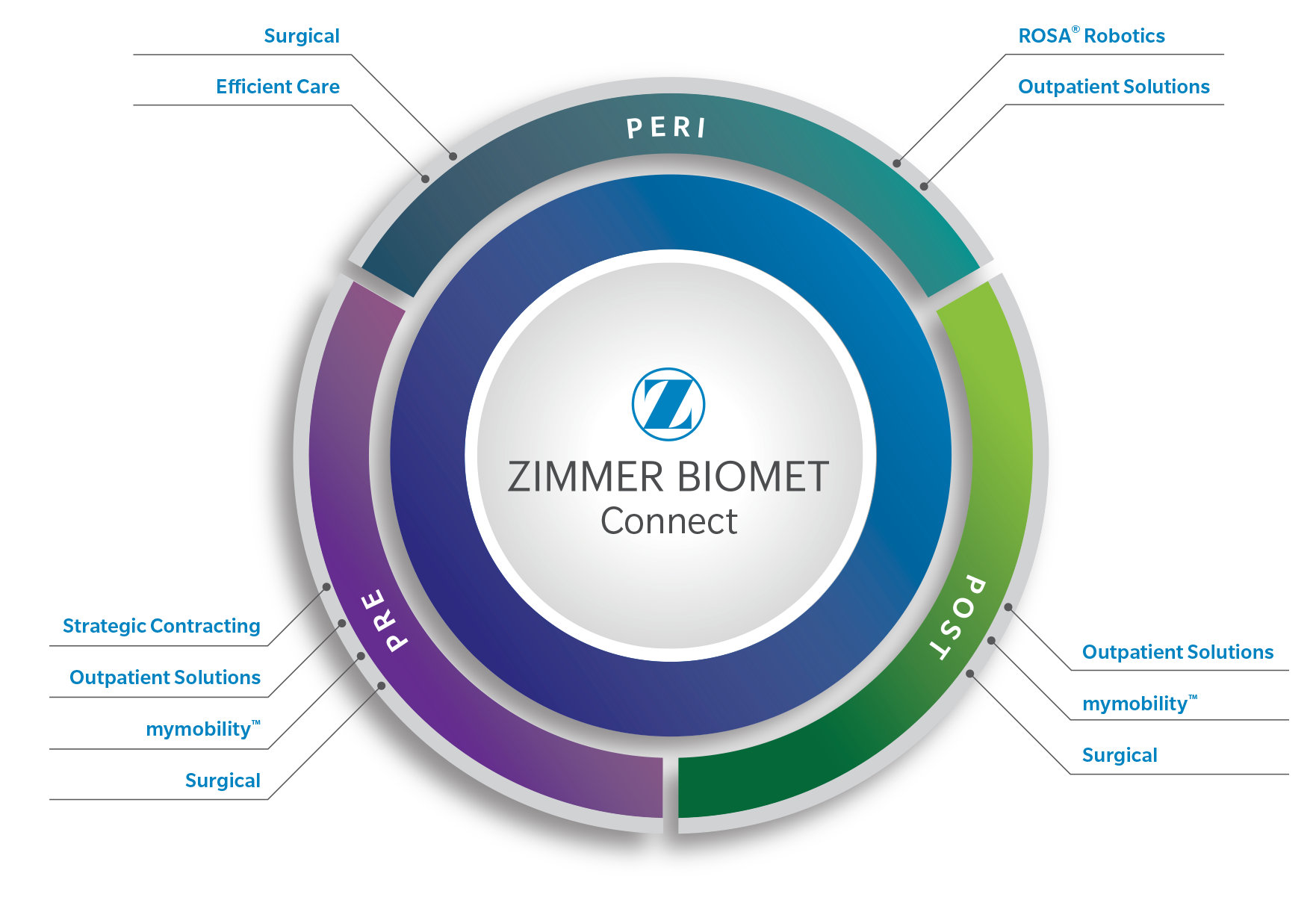The Trilogy Acetabular Hip System builds on the success of the Harris-Galante™ Porous and HGP II Cups by combining proven features with new technology designed to inhibit the formation and migration of polyethylene debris. In doing so, Zimmer Biomet has provided multiple defense mechanisms against the poly debris that can be associated with osteolysis.
Trilogy Acetabular Hip System

Clinical History

Ten-year survivorship analysis of Galante's series of 204 Harris-Galante Cups revealed that the acetabular component had a 99 percent chance of survival with revision or aseptic loosening as the end point. Osteolysis was noted in only 4 percent of cases.1
In a series of 264 Harris-Galante Cups implanted by eight surgeons, Bohm and Boshche reported that no acetabular components had been revised for aseptic loosening and there was no evidence of pelvic osteolysis at 11 years follow-up. The cumulative survival rate with removal as the end point was 98 percent.2
Options for Patient Fit and Surgeon Preference

Available in a complete size range and a variety of shell configurations and liner options, the Trilogy System offers surgeons ample scope to meet both the primary and revision needs of their patients while accommodating their surgical preference.
Removable Longevity Highly Crosslinked liners are available in standard, 10 degree, and 20 degree elevations, 7mm offset, oblique, and eccentric options. Additionally, large head liners are available up to size 40mm ID. This offers a range of options to assist the surgeon in optimizing femoral head coverage and restoring proper hip kinematics. The liners are designed to minimize wear by achieving maximum congruency and optimized poly thickness without compromising range of motion and metal shell thickness.
Longevity Highly Crosslinked Polyethylene
Crosslinking has been shown to reduce the wear rate of polyethylene
by up to 89% in laboratory studies.1 Clinical experience
with highly crosslinked polyethylenes has also demonstrated a
substantial reduction in the rate of wear.2,3 This
remarkable process creates a three-dimensional structure that is more
resistant to abrasion.4,5
Longevity Highly Crosslinked Polyethylene was developed to
address the issue of wear in total hip arthroplasty. To help ensure
optimal wear resistance, Zimmer employs a proprietary process based in
part on patents licensed from Massachusetts General Hospital and the
Massachusetts Institute of Technology. Using high-dose electron-beam
radiation, this process fully crosslinks broken molecular polyethylene
chains, leaving virtually no free radicals to promote oxidation.
The process produces a 10-fold wear rate reduction—an average 89% reduction of debris generated—compared to standard polyethylene control samples.1 The material also meets all of the mechanical property requirements of the ASTM and ISO standards. Longevity Crosslinked Polyethylene is available with the Continuum ® Acetabular System, Trabecular Metal™ Modular Acetabular System, and Trilogy ® Acetabular System, which is based on the long Zimmer tradition of clinical success with the Harris-Galante™ and HGP II porous cups.
BIOLOX® delta Ceramic Technology*

Very Low Wear
Ceramic surface hardness reduces friction and improves wear6
Favorable wetting characteristics of ceramic contribute to better lubrication and lower wear 6
High Fracture Resistance
BIOLOX delta toughness and bending strength is more than double over pure Alumina ceramics through the addition of zirconia and strontium oxide 6
Zirconia prevents the initiation and/or propagation of cracks
Strontium oxide forms platelet-like crystals to deflect cracking
*Biolox is a trademark of CeramTec AG.
References
- Data on file at Zimmer, Inc.
- Oonishi H, Saito M, Kadoya Y. Wear of high-dose gamma irradiated polyethylene in total joint replacement – longterm radiological evaluation. 44th Annual Meeting, Orthopaedic Research Society, March 16-19, 1998.
- Wroblewski BM, Siney PD, Fleming PA. Low-friction arthroplasty of the hip using alumina ceramic and crosslinked polyethylene. J Bone Joint Surg (Br). 1999; 81-B: 54-5.
- Grobbelaar CJ, DuPlessis TA, Marais F. The radiation improvement of polyethylene prosthesis. J Bone Joint Surg. 1978;60-B(3):370-374.
- Oonishi H, Kuno M, Ikada Y, et al. Super low wear crosslinked UHMWPE by heavy high-dose gammaradiation. Proceedings from the 2nd Congress of Hip Section of Western Pacific Orthopaedic Assn. 1996;4.
- Kuntz M, Validation of a New High Performance Alumina Matrix Composite for use in Total Joint Replacement. Seminars in Arthroplasty, 2006; 17: 141-145.

The Trilogy Acetabular System constrained liner is indicated for either cemented or noncemented use as a component of a total hip prosthesis in primary or revision patients at high risk of hip dislocation due to a history of prior dislocation, bone loss, soft tissue laxity, neuromuscular disease, or intraoperative instability and for whom all other options to constrained acetabular components have been considered.
Indications

Bone necrosis induced by radiation can occur as the result of therapeutic exposure to >35 Gy for the treatment of cancer. Osteoradionecrosis of the acetabulum is a relative contraindication to total hip joint replacement because of the likelihood of failure of the acetabular implant due to poor bone stock. In cases where hip arthroplasty is necessary when pelvic radiotherapy has previously occurred, use of protrusion rings, bone graft harvested from outside the zones of irradiation, and bone cement may be required to minimize the risk of subsequent failure of the acetabular implant.
The Trilogy constrained liner should not be used with skirted femoral heads. The skirt will reduce the range of motion, increasing the possibility of impingement and subsequent dislocation of the device.
Contraindications
These devices are provided sterile by prior exposure to gamma irradiation and remain sterile as long as the package integrity has not been violated. Inspect each package prior to use and do not use the component if any seal or cavity is damaged or breached or if the expiration date has been exceeded. Once opened, the component must be used, discarded or resterilized.
- Clohisy JC, Harris WH. Primary hybrid total hip replacement at ten-year follow-up. Presented at the Harvard Hip Course, September 1997.
- Callaghan JJ, Gooma GS, Olejiniczak JP, et al. Primary total hip arthroplasty: an interim follow-up. Clin Orth Rel Res.

Legal Manufacturer:
Zimmer, Inc.
1800 West Center Street
Warsaw, Indiana 46580 USA




